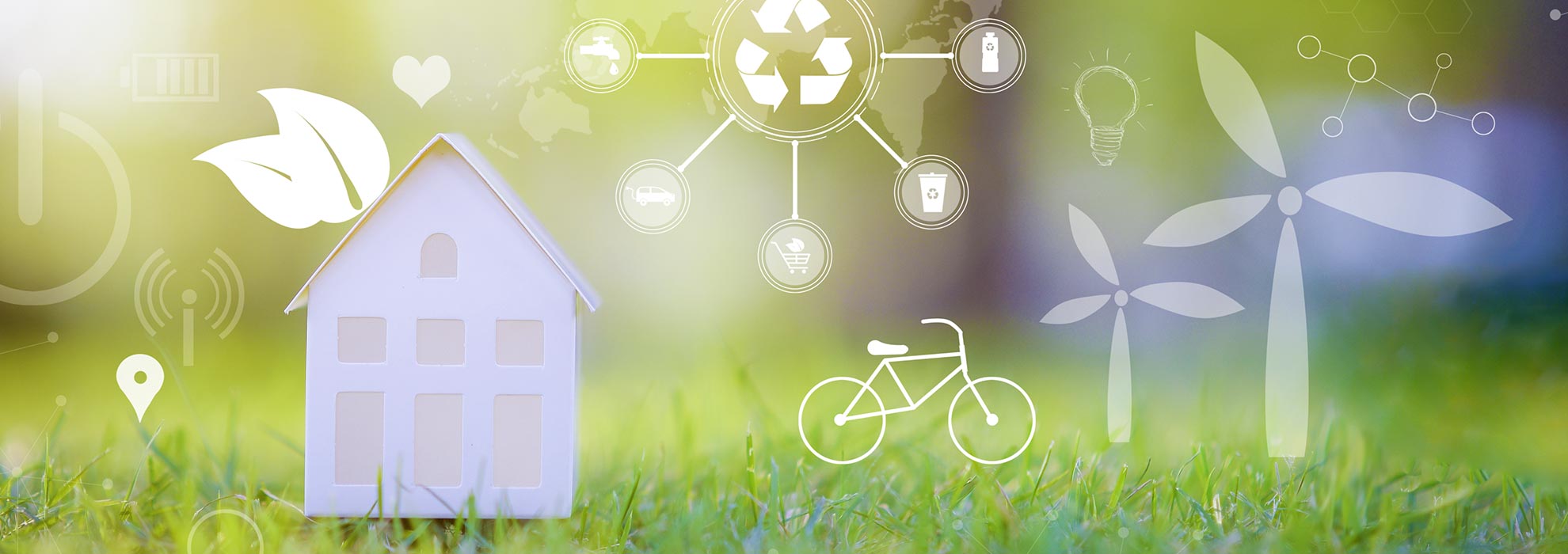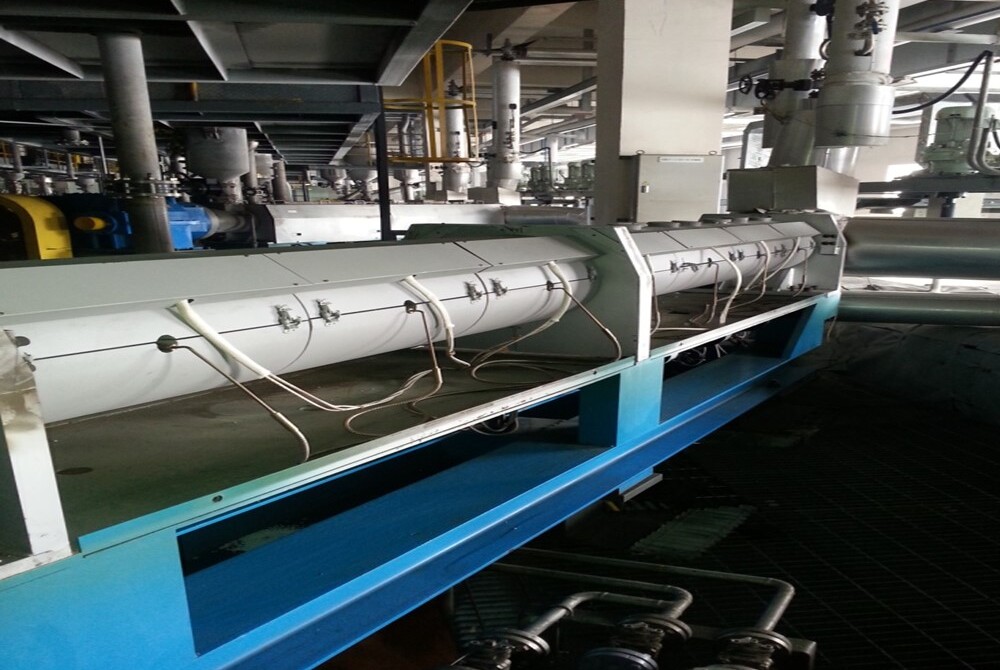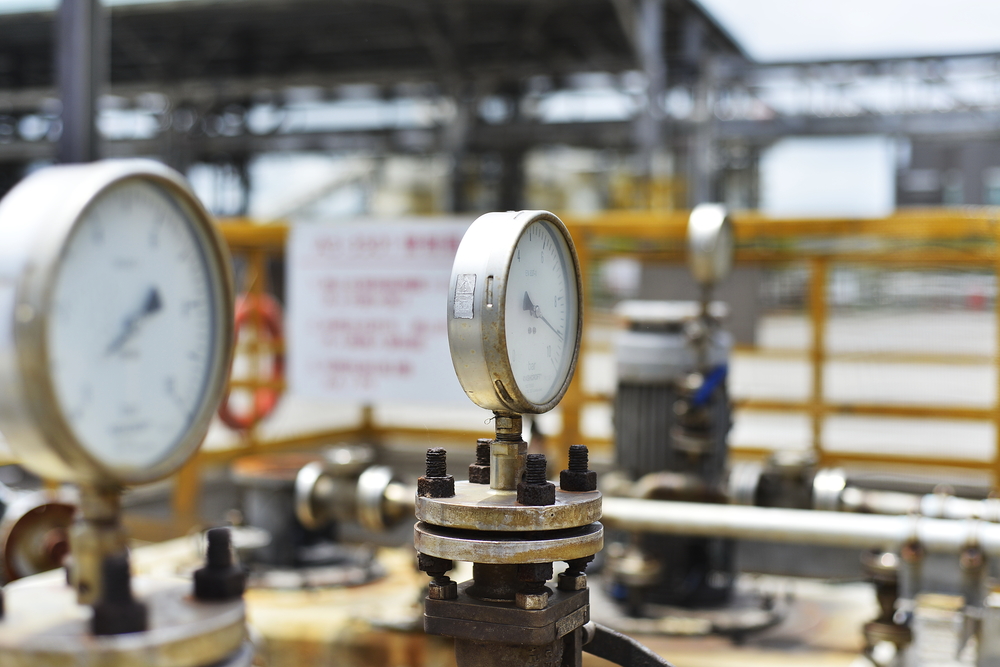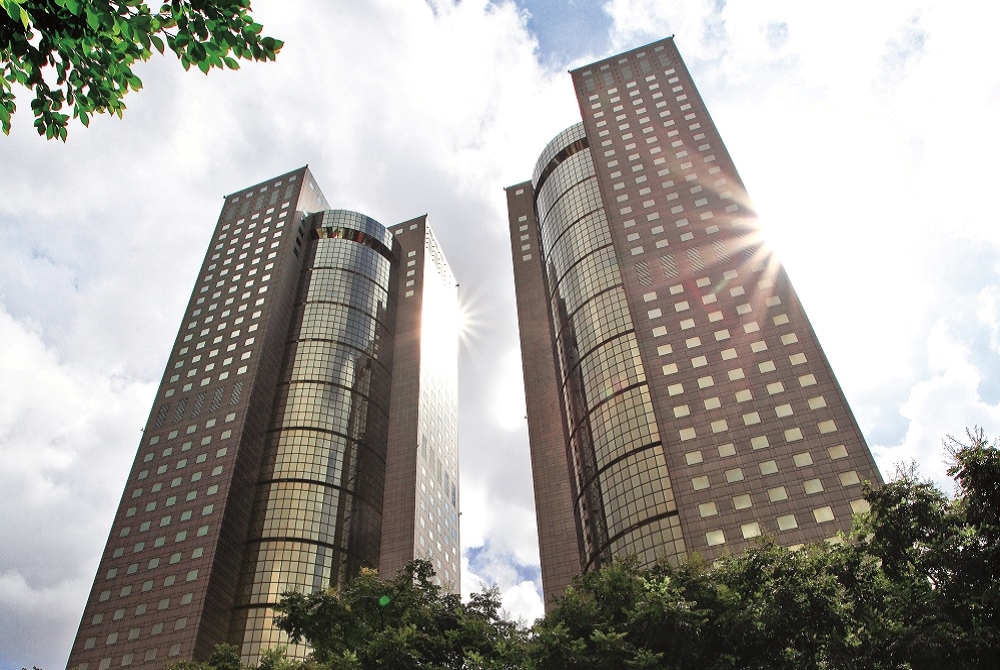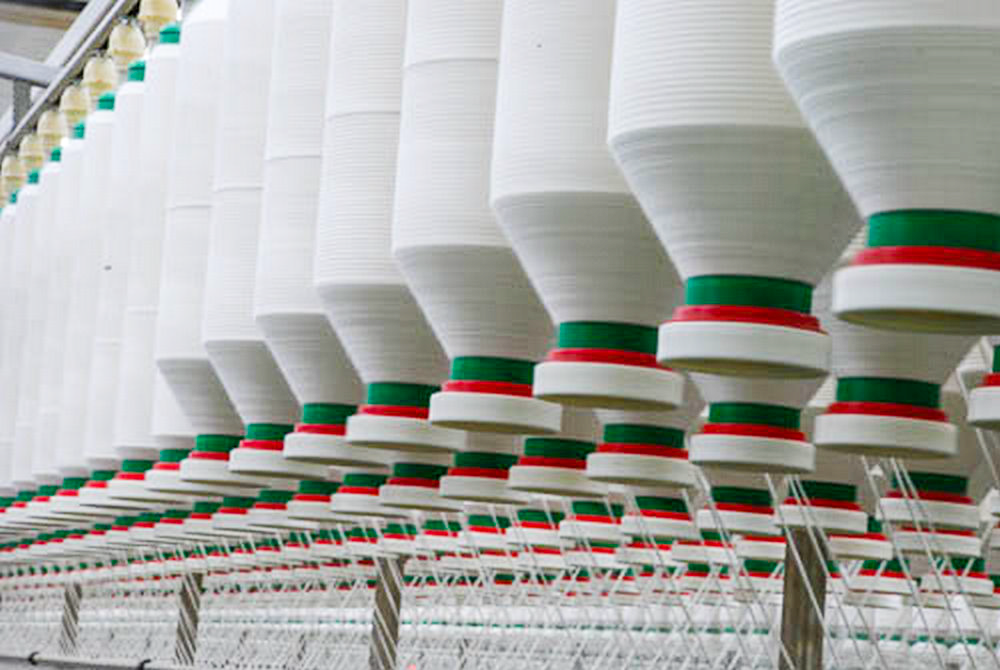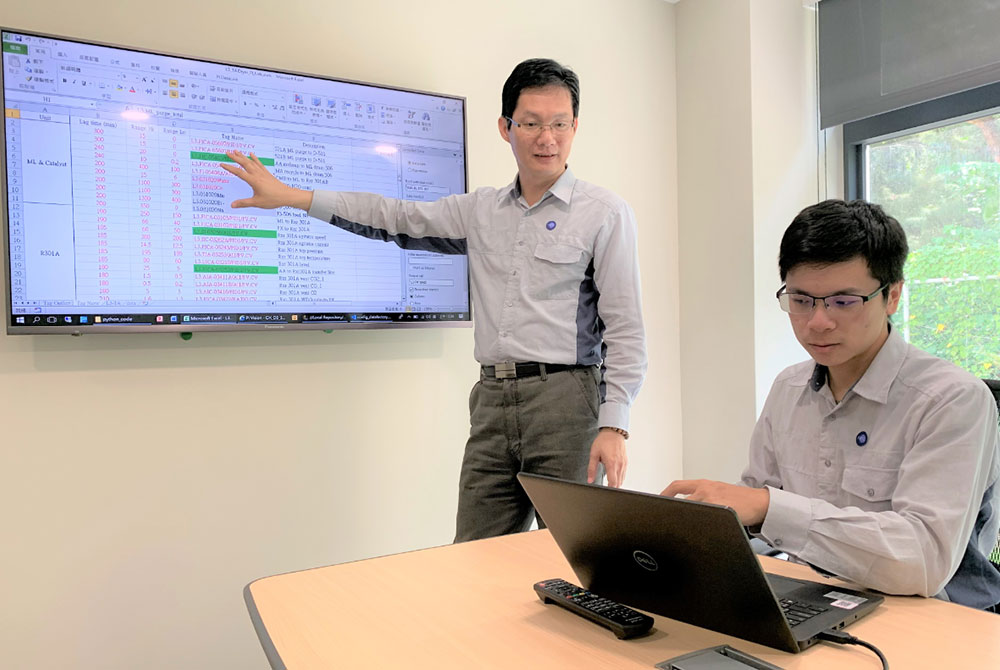Energy Management
FENC introduces energy management systems and technological innovations to maximize the use of renewable energy and minimize the use of non-renewable energy.
In 2024, the overall energy consumption at FENC dropped by 6% from the previous year and the energy consumption per unit of production fell by 1%. The reduction is the result of energy and carbon reduction projects implemented by FENC as well as the decrease in production at the Petrochemical Business. A total of 90 projects were implemented for the year to improve energy efficiency, including production improvement, equipment enhancement and energy management. The Company will extend this approach and maximize energy efficiency through a mix of energy conservation projects.
Energy Management System and Establishment
.png)
Energy Consumption in 2024
.png)
FENC’s total renewable energy use in 2024 amounts to 1,229 TJ, which accounts for 7% of its total energy consumption during the year. Of the total electricity consumption, 14% is renewable electricity.
Energy Consumption per Unit of Production
Unit: GJ / metric ton of production
.png)
Energy Consumption
Unit: TJ
| Petrochemical | Polyester | |||||||
| 2021 | 2022 | 2023 | 2024 | 2021 | 2022 | 2023 | 2024 | |
| Purchased Electricity | 1,137 | 1,106 | 960 | 510 | 3,483 | 3,079 | 3,131 | 3,036 |
| Purchased Renewable Electricity | 0 | 0 | 0 | 0 | 27 | 131 | 316 | 403 |
| Self-generated Renewable Electricity | 1 | 4 | 7 | 26 | 6 | 11 | 22 | 25 |
Total Electricity Consumption | 1,138 | 1,110 | 967 | 536 | 3,516 | 3,221 | 3,469 | 3,464 |
| Natural Gas | 4,077 | 4,232 | 3,738 | 2,457 | 2,533 | 2,458 | 2,991 | 3,184 |
| Heavy Oil | 0 | 0 | 0 | 0 | 285 | 247 | 70 | 25 |
| Diesel | 8 | 6 | 5 | 3 | 28 | 33 | 28 | 21 |
| Coal | 0 | 0 | 0 | 0 | 3,897 | 3,443 | 2,419 | 3,370 |
| Coal-Water Slurry | 0 | 0 | 0 | 0 | 2,297 | 1,951 | 1,300 | 1,245 |
Biomass Fuel | 201 | 192 | 141 | 133 | 0 | 24 | 41 | 0 |
| Purchased Steam | 18 | 22 | 12 | 0 | 297 | 264 | 285 | 322 |
Total Energy Consumption | 5,442 | 5,562 | 4,863 | 3,129 | 12,853 | 11,641 | 10,603 | 11,631 |
Percentage of Renewable Electricity | 0.1% | 0.4% | 1% | 5% | 1% | 4% | 10% | 12% |
Percentage of Renewable Energy | 4% | 4% | 3% | 5% | 0.3% | 1% | 4% | 4% |
Energy Consumption per Unit of Production (GJ / metric ton of production) | 2.29 | 2.67 | 2.64 | 2.27 | 2.53 | 2.47 | 2.25 | 2.38 |
Textile | Total | |||||||
2021 | 2022 | 2023 | 2024 | 2021 | 2022 | 2023 | 2024 | |
| Purchased Electricity | 1,989 | 1,522 | 1,360 | 1,207 | 6,609 | 5,707 | 5,451 | 4,753 |
| Purchased Renewable Electricity | 0 | 218 | 273 | 311 | 27 | 349 | 589 | 719 |
| Self-generated Renewable Electricity | 33 | 34 | 37 | 36 | 40 | 49 | 66 | 87 |
Total Electricity Consumption | 2,022 | 1,774 | 1,670 | 1,554 | 6,676 | 6,105 | 6,106 | 5,554 |
| Natural Gas | 822 | 738 | 687 | 663 | 7,432 | 7,428 | 7,416 | 6,304 |
| Heavy Oil | 3 | 8 | 4 | 0 | 288 | 255 | 74 | 25 |
| Diesel | 17 | 8 | 6 | 5 | 53 | 47 | 39 | 29 |
| Coal | 1,215 | 1,039 | 684 | 266 | 5,112 | 4,482 | 3,103 | 3,636 |
| Coal-Water Slurry | 144 | 111 | 90 | 8 | 2,441 | 2,062 | 1,390 | 1,253 |
Biomass Fuel | 0 | 101 | 102 | 295 | 201 | 317 | 284 | 428 |
| Purchased Steam | 246 | 219 | 173 | 177 | 561 | 505 | 470 | 499 |
Total Energy Consumption | 4,469 | 3,998 | 3,416 | 2,968 | 22,764 | 21,201 | 18,882 | 17,728 |
Percentage of Renewable Electricity | 2% | 14% | 19% | 22% | 1% | 7% | 11% | 14% |
Percentage of Renewable Energy | 1% | 9% | 12% | 22% | 1% | 3% | 5% | 7% |
Energy Consumption per Unit of Production (GJ / metric ton of production) | 7.13 | 7.18 | 7.06 | 7.49 | 2.81 | 2.88 | 2.67 | 2.65 |
Note: 1. Energy consumption is mainly for production purposes, covers energy used for the generation of electricity, heat and steam; cogeneration; firefighting pumps; vehicles for internal transport. |
Internal Energy-Saving Incentives
- Far Eastern Energy Award
To excel further in energy management, FENC is encouraging collaboration with the affiliates under FEG. Through peer exchange, these corporate entities may acquire energy conservation approaches that will inspire technological advancement and increase energy efficiency. Since 2005, FEG has been presenting Far Eastern Energy Awards to encourage and recognize excellence in improving energy conservation technologies and practices within the conglomerate. In 2024, FENC submitted 14 projects, accounting for 28% of the total entries. FEAZ submitted an energy-saving project that drastically reduced the steam used during production. The plant retrofitted the steam iron, turning it into an electric model. As its production increased by the quarter, the overall energy efficiency also grew noticeably, delivering an average annual energy-saving rate of 22%. The performance won accolades and the Award of Excellence from FEG. - Incorporation of Energy-Saving Performance Into Remuneration
In 2016, Hsinpu Chemical Fiber Plant established the Regulations Governing Energy Conservation Incentives, tying energy-saving performance with the evaluation for salaries and bonuses. Among the performance indicators is energy conservation, specifically, the energy-saving (electricity-saving) rate and the rate of change in energy saving per unit of consumption.
Avid Support for Governmental Policies
For the past ten years, FENC production sites in Taiwan has met the target of reaching the 1% electricity-saving rate set by the Ministry of Economic Affairs (MOEA). On January 2, 2025, the MOEA announced the new targets for the period between 2025 to 2028. For private and state-owned enterprises with contracted electricity capacity exceeding 10 MW, the target of average electricity-saving rate has been increased to 1.5%. It is FENC’s intent to continue optimizing its energy management system with progressive approaches to achieve the new target.






